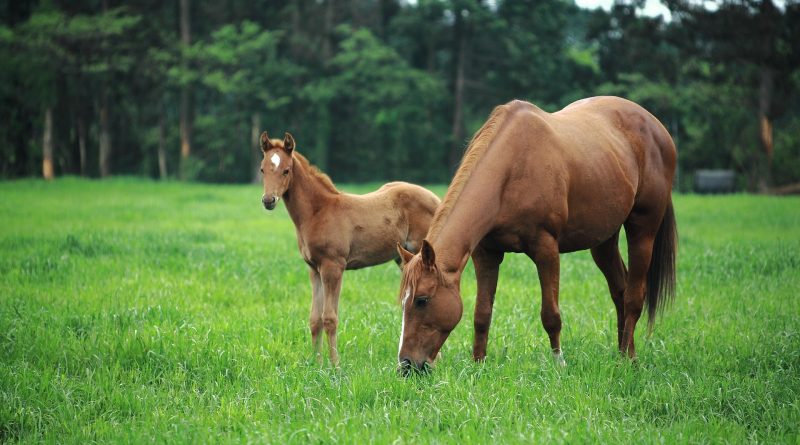Hope For the Horseracing Integrity and Safety Act?
WASHINGTON, D. C. — When Congress enacted the Horseracing Integrity and Safety Act (HISA) in December 2020, I was ecstatic.Seeing the signing of that legislation into law was at the time the most rewarding experience of my professional career as a lobbyist, lifelong horseman, and animal advocate.
It was a also big moment in our nation’s relationship with horses, since it was the first federal horse protection legislation enacted in half a century. Not since Congress passed the Free Roaming Wild Horse and Burro Act of 1971 and Horse Protection Act of 1970 have we seen meaningful action to protect our iconic American equines, whose suffering sparked the animal welfare movement in the United States in the 1800s, championed by Henry Bergh.
We worked with many others, such as The Jockey Club, The Breeders’ Cup, the Water Hay Oats Alliance (WHOA), the Stronach Group – owner of Pimlico, site of The Preakness Stakes, and Laurel Racetracks in Maryland – and more key players in the horse-racing industry. We believed we had done something great to help the horses at the center of the enterprise of racing.
But there are horse industry groups, like the Horsemen’s Benevolent and Protective Association (HBPA), that have fought against horse protection every step of the way. And they’ve been joined by the attorneys general in Louisiana, West Virginia, and Texas in a legal battle against reformers who want to see doping in the sport come to an end.
These defenders of the status quo are not looking out for the horses, and they are not even looking out for themselves, given that continuing tolerance of race-day doping puts their entire industry at risk. With doping rampant, the industry risks being viewed as an anachronism and one that disregards the most basic standards of care for horses, at a time when other forms of gambling are right at the fingertips of Americans.
Unfortunately, the U.S. Court of Appeals in New Orleans just ruled in favor of those who want to maintain the present-day balkanized, poorly regulated industry and keep horse abuse alive. The Court deemed it unconstitutional. That was just the latest in a tougher series of events that put implementation of the federal anti-doping law at risk.
We also were deeply concerned when the new authority that was created to build a framework for enforcement of the new law, the Horseracing Integrity and Safety Authority (Authority), broke with the U.S. Anti-Doping Agency (USADA) last December. USADA was rejected as an independent, science-based organization and completely shut out of both the enforcement of the new law and the drug testing.
As we lobbied for the bill in more than a thousand meetings, there was not a conversation we had that did not centrally mention the critical role USADA would provide testing horses for illegal substances. That non-profit entity is the gold standard in anti-doping work. And the new Authority has seen criticism on transparency issues, which led to our development of a new watchdog site: www.HISAWatchdog.org.
I have seen horse abuse firsthand since childhood, and I have watched a federal law designed to protect horses fail miserably for my entire life: the Horse Protection Act (HPA) enacted in 1970. HPA was intended to stamp out an abusive practice called soring, where trainers intentionally injure horses’ feet to achieve an enhanced artificial gait, all for a “set of roses,” the glory, and the prize money. I doubt anyone would argue that law has worked as intended. Animal welfare groups, and most everyone in the horse world, would agree it has failed. And no one has been able to amend the law to improve its effectiveness. Just like HISA, HPA has seen legal challenge after legal challenge.
I have also seen the 1971 Wild-Free Roaming Horses and Burros Act – just like HPA – fail miserably. That law was designed to preserve and protect our wild equines living on the same western landscapes where they evolved over millions of years. Today, we are seeing advocates struggle to protect our iconic wild herds from being decimated by the corruption, deliberate cruelty, and utter incompetence of the Bureau of Land Management, the very agency charged with their protection.
So, is there hope for the Horseracing Integrity and Safety Act? Only time and appeal to the highest court in the land can give us the answer. And if the new law fails to be upheld, American horse racing may very well go the way of greyhound racing or animal exhibits at the Ringling Bros. and Barnum Bailey Circus. Then, the term “Racing Extinction” may very soon take on a new meaning.
Marty Irby is a former 8-time world champion equestrian who currently serves as executive director at Animal Wellness Action in Washington, D.C., and was recently honored by Her Majesty, Queen Elizabeth, II for his work to protect horses. Follow him on Twitter, Instagram, and Facebook @MartyIrby.

